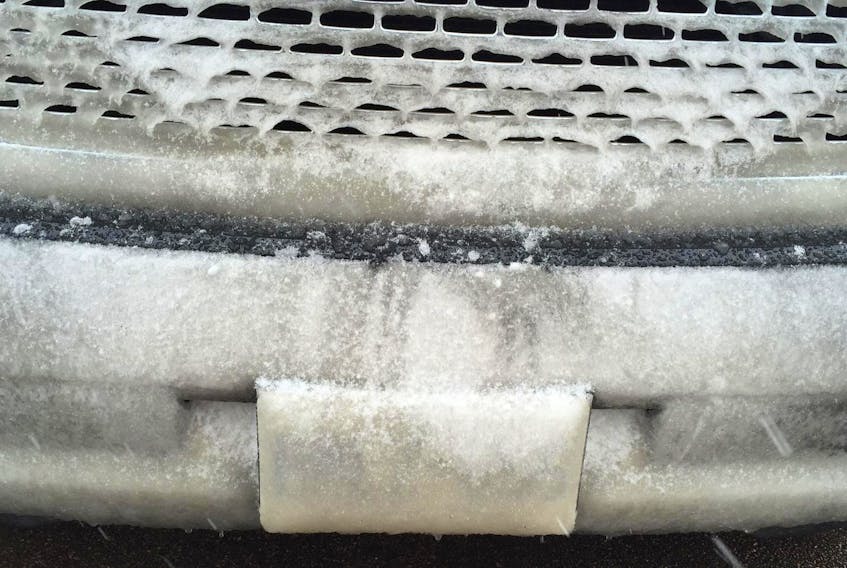Like most adults, vehicles are not particularly fond of cold weather.
Also like adults, the older they get the deeper that dislike for the bitter cold. Extreme cold puts a strain on both of our systems.
Being prepared could well make the difference between a few unpleasant minutes of exposure and a dangerous period of inactivity.
In no particular order, here are some things to help that preparation:
Wipers
Make sure they are turned off before attempting to start the engine. If in doubt, pull them clear of the windshield. If frozen to the glass, you may blow a fuse or damage the motor. If they do pull free, it may damage the leading edge. Using them to clear ice causes similar damage as that thin leading edge is dragged across the sharp pieces of ice. Also, they are not designed for heavy lifting so don’t use them to move quantities of snow or ice. That pits additional strain on the small electric motor. Get in the habit of making sure the wipers are off before shutting the vehicle down. Not a bad idea to pull them clear of the windshield when you are stopping for a lengthy period.
Scrapers/brushes
Use a decent quality plastic scraper and a reasonable amount of pressure to avoid scratching the glass. I prefer a long handled brush with plenty of bristles to clean off the snow and a rubber scraper on the reverse side for the glass. Keep the shovel or broom where they belong — on the ground.
Washer fluid
Use fluid especially formulated for severe winter, rated for -40 or below. If you are unsure what is in there as winter approaches, try to drain/use as much as you can and fill with winter fluid. Otherwise it may freeze and create cracks or other damage to hoses, and components requiring expensive repairs. Keep a spare jug in the trunk.
Fuel tank
Fuel is conditioned at the refinery according to the season. Winter fuel provides easier starts and less likelihood of freezing in the lines. If you haven’t filled the tank in several weeks do so now. Try to keep the tank as full as possible during winter to reduce the chance of moisture forming in the lines and freezing.
Tires
Of course you have already installed proper winter tires! Regardless, proper tire pressure is critical to ensure the contact patch — the little area of tread in touch with the road, can do its job. Tires lose about one PSI for every 5°C (9°F) drop in temperature. The tire that was OK at 30 psi last month will drop to about 24 psi or less at minus 20. That counts as severe under inflation. Check pressures when the tires are cold. Use the maximum pressure amount shown in the owner’s manual or on the door frame as a guide in extreme cold conditions. Do not use the pressure numbers on the tire.
Exhaust
If the tailpipe becomes blocked by snow or ice, the exhaust gases may find another way out – and into the passenger compartment with deadly results. Never back into a snow bank. For the same reason never warm up a vehicle in an enclosed garage.
Battery
Winter magnifies existing problems, and places an added strain on all components. The battery can loose as much as half its power in extreme cold conditions. If your car has not been used for several weeks it may need a charge. If it is more than three years old it may be time for a new one at the first sign of trouble.
Lights
Make sure they are all operating properly and are cleared of snow and ice, so not only are you able to see, but others can to see you.
Recirculate
Be wary of the recirculate position on your heater/defroster. Extended use will result in more moisture and less oxygen inside the vehicle. The system limits the amount of outside air to help warm up the interior. But left on, that lack of fresh air could make you drowsy. And with each breath you take you expel more moisture into the interior of the vehicle to come into contact with the cold glass causing it to fog up.
Starting
Before attempting to start the vehicle in extreme cold conditions turn off all sources of electrical load like the lights, wipers, heater, rear defrost, heated seats etcetera to ensure maximum power gets to the starter.
Coolant
Make sure the coolant in the engine is suitable for extreme cold conditions. It will be from the factory, and after service by any reputable shop. But if someone added water during the summer, the resultant mixture could be diluted, and the results incredibly expensive.
Locks
They can become frozen if moisture has been trapped in the mechanism. Do not use more moisture i.e. hot water to thaw them out. Try heating the key with a cigarette lighter or carry a little container of lock de-icer with you — obviously not inside the vehicle. To avoid this, spray a small amount of WD40 or similar lubricant into the locks with the small hose provided.
Remove all snow
Start at the roof, then the windows, then the mirrors, and lights followed by the grill and trunk lid ensuring it is all gone before it slides down blocking the windows or lights.
Call
Keep a fully-charged cell phone with you, and a charge cord in the vehicle so you can call for assistance.









